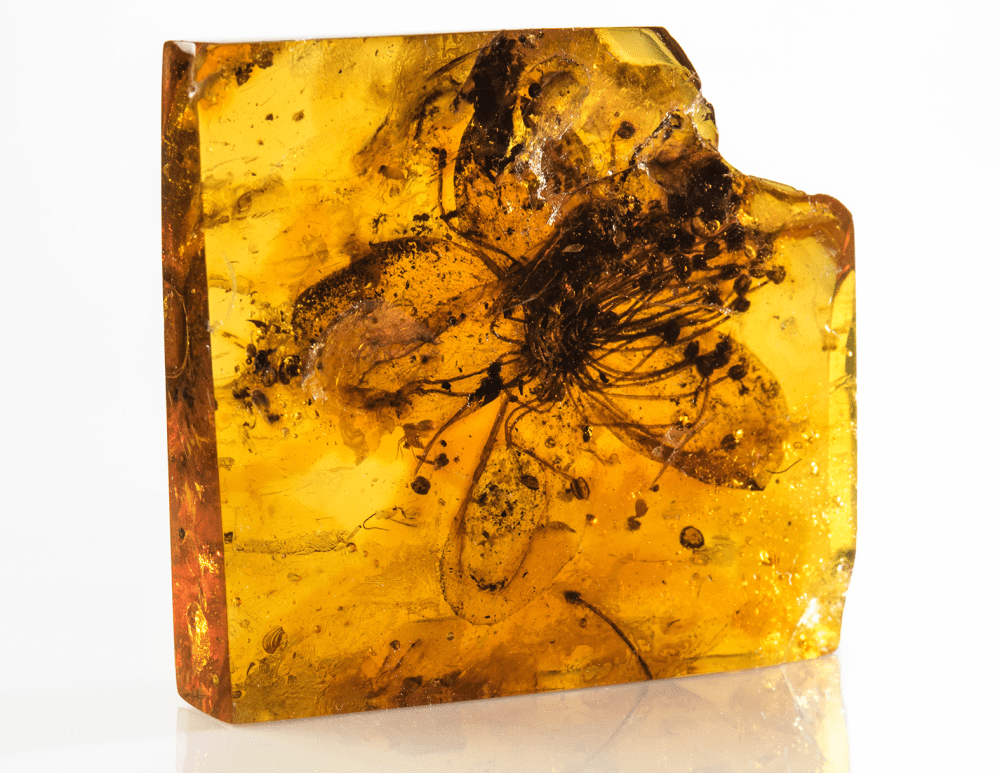How will you look in 30 million years’ time? Probably not good, unless you happened to stumble into a vat of sap in your final moments, in which case you might just come out looking as fabulous as a flower whose pollen was recently tested after having spent over 33 million years preserved in amber.
The specimen is the largest-known fossilized flower found preserved in amber, with petals stretching across 28 millimeters (1.1 inches) making it three times the size of existing recorded specimens. It’s believed to have blossomed some time around 38 to 33.9 million years ago in the Baltic forests of northern Europe.
The specimen was actually originally described and named in 1872 when it was decided that it had blossomed from Stewartia kowalewskii, an ancient evergreen. However, researchers Eva-Maria Sadowski and Christa-Charlotte Hofmann decided to reanalyze the fossil and came up with a different answer thanks to the shiny new toys in the modern palaeobotanist’s tool shed.
Using equipment not available to the 1872 team, the researchers were able to extract some pollen from the fossil flower and analyze the sample, sort of like Jurassic Park only without all the career-ending chaos that ensued. Their results showed the flower is closely related to the Asian species of Symplocos and so have suggested a shiny new name for the ancient specimen: Symplocos kowalewskii.

Who says 33 million years is too old to start again? Image credit: Carola Radke, MfN
“Symplocos kowalewskii from Baltic amber is the by far largest flower [specimen] known,” concluded the authors. “Its in-situ pollen, combined with morphology of the corolla and androecium, indicates strong affinities to extant Asian species of S. subgen. Symplocos.”
As for how such a unit of a flower came to be trapped in amber, the team suggest that an especially large outpouring of resin is likely to thank for its remarkable condition. Organic material trapped in amber is preserved exceptionally well as it’s protected from pathogens and organisms that might attack its structure, so flowers like S. kowalewskii can continue blossoming for upwards of 33 million years.
While it’s the largest found trapped in amber, it’s by no means the only significant flower fossil. In 2022, the oldest known fossil of a flower bud was discovered by researchers in China, pushing the evolution of flowers back in history by at least a couple dozen million years. This was later followed by another study into fossil flowers which found that a highly successful group of plants known as buckthorn were 150 million years older than expected.
“Flowering plants are the basis of our entire existence, producing oxygen, food, timber, medicine, habitats for animals and the parks and gardens where we live,” said co-author and John Curtin Distinguished Emeritus Professor Byron Lamont, an evolutionary ecologist at Curtin University. “Thus, it is of great interest to know how long they have been on Earth and under what circumstances they arose.”
Discovering a flower wrapped in amber might not have the theme park potential of a dinosaur-draining mosquito, but it does tell us a lot about the history of life on our planet.
The largest fossil flower’s reclassification was published in Scientific Reports.
Source Link: The Biggest Fossil Flower Ever Found In Amber Has A New Name